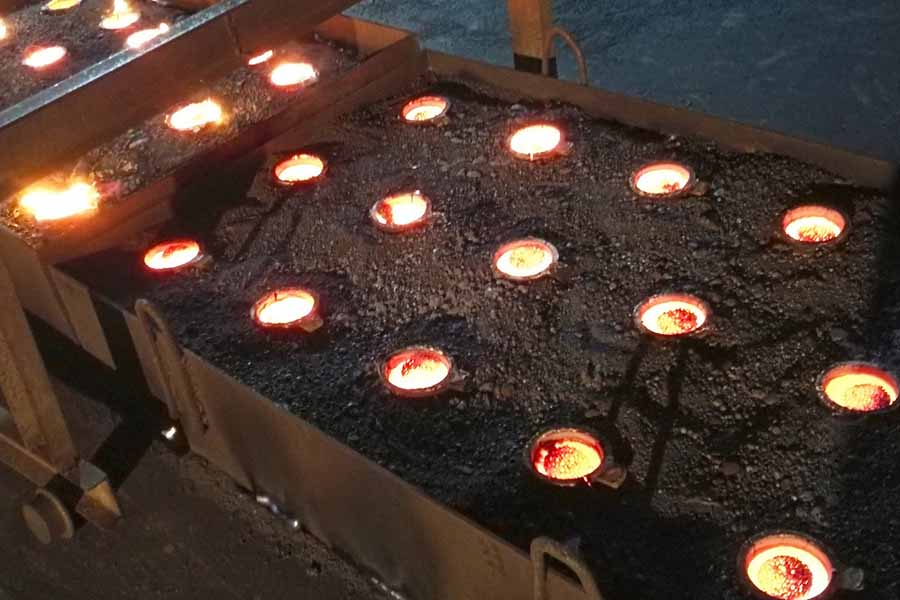Performance Characteristics and Structural Characteristics of Widely Used Cast Alloy Castings
Many customers have asked us how to choose a casting alloy. Different casting alloys have different properties and structural characteristics. In the stage of casting process design, engineers must consider the characteristics of different casting alloys. In this way, casting defects can be avoided as much as possible.
In the design stage of casting products, a special project team should be set up to conduct "Design Failure Mode and Effects Analysis" (DFMEA). The project team generally consists of product designers, casting process designers, and environmental protection professionals. The main content of the DFMEA analysis should include whether the requirements of the casting quality for the part structure, the casting process for the casting structure, and the casting process for environmental protection requirements are all met.
1- Gray Iron Castings
Performance Characteristics of Gray Iron Castings
• Liquid gray iron has good fluidity, and its volume shrinkage and linear shrinkage are small, and the notch sensitivity is small
• Low comprehensive mechanical properties, compressive strength is about 3~4 times higher than tensile strength
• Good shock absorption, the shock absorption of gray iron is about 10 times greater than that of cast steel
• Gray iron has low modulus of elasticity
Structural Characteristics of Gray Iron Castings
• Small wall thickness and complex shapes are available
• The residual stress of the casting is small
• Gray iron castings should not be designed with very thick structures, and asymmetrical sections are often used to make full use of their compressive strength
2- Ductile Iron Castings
Performance Characteristics of Ductile Iron Castings
• Fluidity and line shrinkage of ductile iron are very close to those of gray cast iron
• The tendency of volume shrinkage and internal stress formation is greater than that of gray cast iron, which is prone to shrinkage and cracks
• The strength, plasticity, and elastic modulus of ductile iron are larger than those of gray cast iron, with good abrasion resistance
• Shock absorption is worse than gray cast iron
Structural Characteristics of Ductile Iron Castings
• Generally designed to be uniform wall thickness, and try thick section should be avoid if possible
• For certain thick and large section castings, hollow structure or structure with reinforced ribs should be adopted
3- Steel Casting
Performance Characteristics of Steel Castings
• Poor fluidity and volume shrinkage and linear shrinkage are relatively large
• Comprehensive mechanical properties are relatively high. Compressive strength and tensile strength are equal
• Poor shock absorption and high notch sensitivity
• Low carbon steel castings have relatively good weldability.
Structural Characteristics of Steel Castings
• The minimum wall thickness of steel castings should be greater than the minimum wall thickness of gray cast iron. It is not suitable to design too complex castings
• Steel castings have relatively large internal stress and are easy to bend and deform
• The structure should minimize hot nodes and conditions for sequential solidification should be created
• The fillet of the connecting wall and the transition section of different thickness are larger than those of cast iron
• Complicated castings can be designed into a casting + welding structure to facilitate casting production
4- Malleable Iron
Performance Characteristics of Malleable Iron Castings
• The fluidity is worse than gray cast iron, and the volume shrinkage rate is high
• It is brittle before annealing treatment, and the raw castings are easily damaged
• The comprehensive mechanical properties are slightly inferior to ductile cast iron, and the impact toughness is 3~4 times larger than gray cast iron
Structural Characteristics of Malleable Iron Castings
• Since the malleable cast iron casting is white cast iron, it is suitable for casting small pieces with uniform and thin wall thickness. The most suitable wall thickness is 5-16 mm
• In order to increase rigidity, the cross-section shape is mostly designed as H-shaped or T-shaped and should avoid cross-shaped.
• Partial protrusions should use ribs
5- Tin Bronze Castings and Brass Castings
Performance Characteristics of Tin Bronze Castings and Brass Castings
• Good fluidity, large shrinkage, small crystallization temperature range
• Prone to concentrated shrinkage
• Has good wear resistance and corrosion resistance
Structural Characteristics of Tin Bronze Castings and Brass Castings
• Similar to steel casting
6- Aluminum Alloy and Zinc Alloy Castings
Performance Characteristics of Aluminum Alloy and Zinc Alloy Castings
• The casting performance is similar to that of steel castings, but the relative mechanical properties decrease more significantly as the wall thickness increases
Structural Characteristics of Aluminum Alloy and Zinc Alloy Castings
• The wall thickness of castings should not be too large, and other structural features are similar to those of steel castings

China Sand Casting Foundry
 русский
русский



